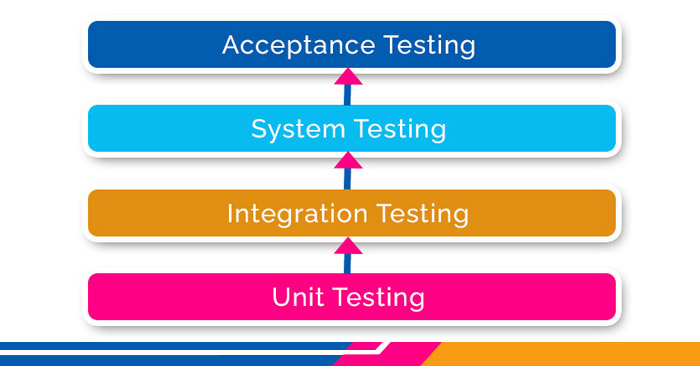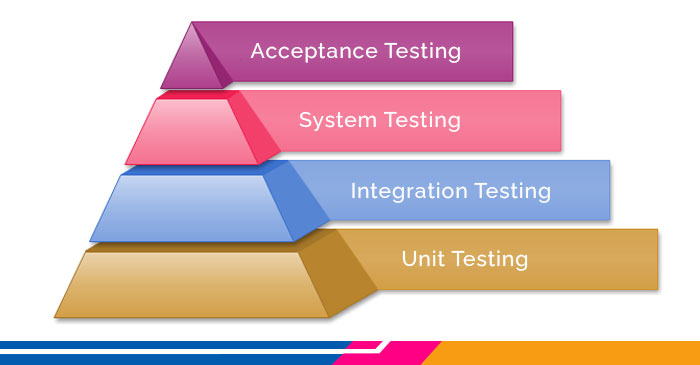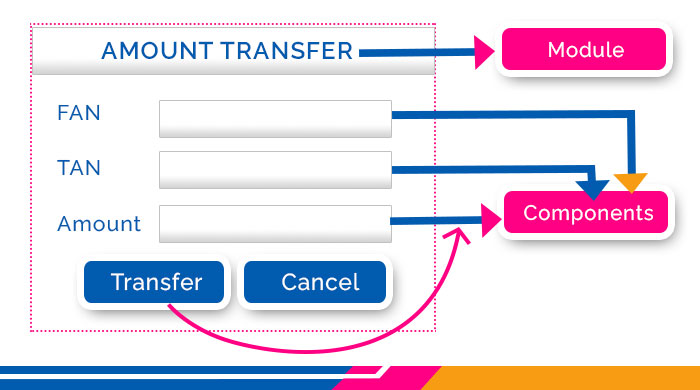What is Unit Testing? Its Importance in Software Testing
Software testing is an essential process that ensures that the software you use works without any issues. One of the types of software testing is called Unit Testing. It is done by the developers during the early stages of software development. The goal is to check if each part of the software works as intended.
Unit Testing breaks down the software into smaller components and tests each one separately. This helps to identify any errors or problems in the code. For example, a unit could be a small piece of code that performs a specific task, such as calculating a number.
Unit Testing is usually done before the software is integrated with other components. It is a technique that helps to catch errors early on in the development process, which can save a lot of time and effort. While Unit Testing is typically done by developers, sometimes QA engineers also perform this type of testing, especially when there is a time crunch or the developers are unable to do it themselves.
Objective of Unit Testing
The objective of Unit Testing is:
- To isolate a code section.
- To ensure the code’s correctness.
- To test each process and function.
- To reduce expenses and address bugs at an early stage of development.
- to facilitate the developers’ quick changes and aid in their understanding of the code base.
- To facilitate the reuse of code.

Types of Unit Testing
Unit testing is of two types:
Manual Unit Testing
To manually test your application, you need to create a step-by-step instruction manual. Start by identifying the code unit that requires testing, such as a function or class. Then, write test cases for valid and invalid input and run them in a test environment. Manual testing helps you identify usability issues that users may face. However, it can be time-consuming for larger applications. Automated testing is often more efficient for extensive testing.
Automated Unit Testing
This type of unit testing uses an automation tool or framework to create and execute test cases. The tool captures any failed test cases and generates a summary report. If a critical failure is detected, the tool may halt the testing process. Automated testing tools simplify the process of testing repetitive test cases.
Workflow of Unit Testing

Unit Testing Techniques
Unit Testing Techniques are classified into three types. They are
Black Box Testing: This testing technique covers the unit tests for input, user interface, and output parts.
White Box Testing: This technique is used in testing the system’s functional behavior by giving input and checking the functionality output, including the internal design structure and code of the modules.
Gray Box Testing: This method involves running the pertinent test cases, functions, and methods and analyzing the code performance of the modules.
Unit Testing Tools
These are some commonly used Unit Testing tools:
- Jtest
- Junit
- NUnit
- EMMA
- PHPUnit
Why Perform Unit Testing?
Unit testing is the first level of testing in a testing hierarchy, prior to integration and other testing levels. It uses modules for testing, reducing the need to wait for unit testing frameworks. Stubs, drivers, and mock objects are used to assist in unit testing.

Generally, software goes through four levels of testing, Unit Testing, Integration Testing, System Testing, and Acceptance Testing. However, sometimes due to time constraints, software testers may skip the necessary Unit Testing phase. This can lead to more defects during Integration Testing, System Testing, Acceptance Testing, or even Beta Testing which is the final phase of software testing.
Here are some compelling reasons to consider unit testing in your software development process:
- Unit testing provides testers and developers with a deep understanding of the code base, enabling them to quickly identify and rectify any defects in the code that could cause issues down the line.
- Unit testing is a form of documentation, providing a clear and concise picture of how different components of the code work together.
- By catching defects early in the development process, unit testing helps reduce the number of defects that can occur in the later stages of testing.
- Unit testing facilitates code reusability, making it easy to migrate both the code and the test cases to other projects, saving valuable time and effort.
Example of Unit testing
To help you better grasp the concept of unit testing, let us look at an example:

The requirements for the amount transfer are as follows:
| 1. | Amount transfer |
| 1.1 | From account number (FAN)→ Text Box |
| 1.1.1 | FAN→ accept only 4 digit |
| 1.2 | To account no (TAN)→ Text Box |
| 1.2.1 | TAN→ Accept only 4 digit |
| 1.3 | Amount→ Text Box |
| 1.3.1 | Amount → Accept maximum 4 digit |
| 1.4 | Transfer→ Button |
| 1.4.1 | Transfer → Enabled |
| 1.5 | Cancel→ Button |
| 1.5.1 | Cancel→ Enabled |
The application access details provided by the client are listed below.
- URL→ Login Page
- Username/password/OK → home page
follow the below instructions to reach Amount transfer module
Loans → sales → Amount transfer
We should adhere to the following rules when conducting unit testing:
- We should have at least one module ready to begin unit testing.
- Test for positive values
- Test for negative values
- Avoid over-testing
- No assumption required
We will stop the testing when we feel that the maximum test coverage has been achieved.
We will now start performing unit testing on the various components, such as
- From account number(FAN)
- To account number(TAN)
- Amount
- Transfer
- Cancel

The FAN components
| Values | Description |
| 1234 | accept |
| 4311 | Error message→ account valid or not |
| blank | Error message→ enter some values |
| 5 digit/ 3 digit | Error message→ accept only 4 digit |
| Alphanumeric | Error message → accept only digit |
| Blocked account no | Error message |
| Copy and paste the value | Error message→ type the value |
| Same as FAN and TAN | Error message |
The TAN component
- Provide values as previously done for FAN components.
Amount component
- Provide values as previously done for FAN and TAN components.
Transfer component
- Enter valid FAN value
- Enter valid TAN value
- Enter the correct value of Amount
- Click on the Transfer button→ amount transfer successfully( confirmation message)
Cancel Component
- Enter the values of FAN, TAN, and amount.
- Click on the Cancel button → all data should be cleared.
Why Perform Unit Testing?
Performing unit testing is crucial for software development. Sometimes, developers may try to save time by doing minimal unit testing, but this is a myth. Inappropriate unit testing can lead to high costs for fixing defects during system testing, integration testing, and even beta testing after the application is built. If proper unit testing is done early in development, it can save time and money in the end.
Here are the main reasons to perform unit testing in software engineering:
- Unit tests help to identify and fix bugs early in the development cycle, which can save costs.
- It helps developers to understand the testing code base and make changes quickly.
- Good unit tests can serve as project documentation.
- Unit tests can help with code re-use. You can migrate both your code and your tests to your new project and tweak the code until the tests run again.
Unit Testing Tools
There are several types of unit testing tools available on the market, including:
- Parasoft Jtest
- NUnit
- JUnit
- PHPunit
- EMMA
Unit Testing Techniques
Unit testing leverages the code of software applications and all white-box testing techniques.
- Data flow Testing
- Branch Coverage Testing
- Statement Coverage Testing
- Decision Coverage Testing
- Control Flow Testing
How to Achieve the best Result via Unit testing?
Unit testing of a software application can be very helpful. It can help us find problems without making things more complicated. Here are some steps to follow:
- Each test case must be independent, the test cases should not be affected in the event of any changes or enhancements.
- Give each test a clear and consistent name.
- Identified bugs must be fixed before moving to the next phase of SDLC.
- Only one code should be tested at a time.
- Adopt test cases while writing the code, if not doing so, it will be harder to test everything later as the number of execution paths will increase.
- In the event of changes in code of any module, ensure the corresponding unit test is available for that module.
Advantages of Unit Testing
- Developers can gain a basic understanding of the unit API and its functionality through unit testing.
- Unit testing is a way for programmers to refine their code and ensure that the module works properly.
- Unit testing allows for the testing of individual parts of a project without having to wait for the completion of others.
- Issues can be detected and fixed early in the development process through unit testing, preventing them from becoming larger and more difficult to fix.
- Unit testing helps to improve the overall quality of software by ensuring that each unit of code works as intended and meets the requirements.
- Developers can have increased confidence in their code through unit testing, as they can validate that each unit of the software is functioning as expected.
- Unit testing enables developers to work faster and more efficiently, as they can validate changes to the code without having to wait for the full system to be tested.
- Clear and concise documentation of the code and its behavior is provided through unit testing, making it easier for other developers to understand and maintain the software.
- Developers can safely make changes to the code through unit testing, as they can validate that their changes do not break existing functionality.
- Unit testing can reduce the time and cost required for later testing by identifying and fixing issues early in development.
Disadvantages of Unit Testing
- Creating unit test cases is a time-consuming process.
- Integration testing is necessary to catch errors that may not be covered by unit testing.
- Unit testing is not effective for identifying errors in the UI component of a module.
- Frequent changes to the source code can result in increased maintenance time for unit testing.
- Unit testing cannot cover non-functional testing parameters such as scalability and system performance.
- Developing and maintaining unit test cases for complex systems requires significant time and effort.
- The success of unit testing is dependent on developers writing clear, concise, and comprehensive test cases to validate the code.
- Testing complex units can be challenging, as isolating and testing individual units in isolation from the rest of the system can be difficult.
- Unit testing only focuses on individual units, so it might not be sufficient to test interactions between units.
- Unit testing may not be suitable for testing user interfaces, as it typically focuses on the functionality of individual units.
- Over-reliance on automated unit tests can lead to a false sense of security, as automated tests may not uncover all possible issues or bugs.
- Unit testing requires ongoing maintenance and updates, as the code and test cases must be kept up-to-date with changes to the software.
Bottom Line
The significance of Unit Testing in the realm of software development cannot be overstated. It stands as the bedrock, the foundational assurance that each component of software operates as intended, providing a safety net against potential errors and glitches down the line.




